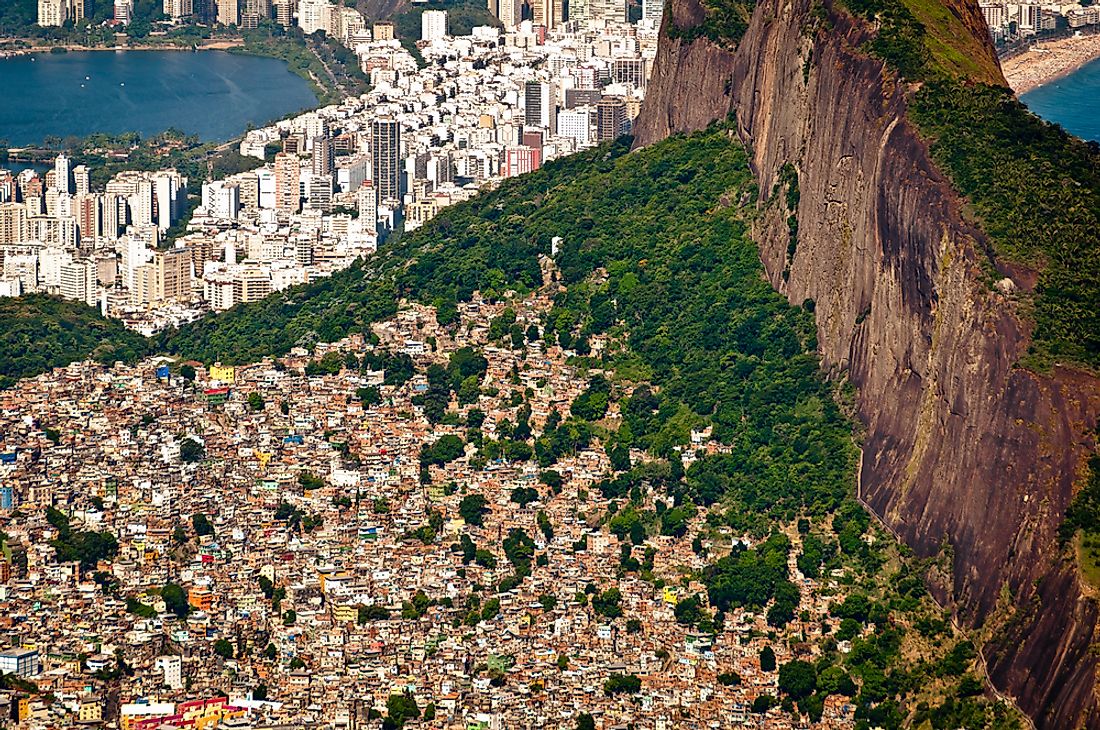Cities With the Most Income Inequality

Income inequality refers to the state in which various individual incomes or households lack equal distribution in a given economy. It is given as a ratio of individual income to the income of the entire population. The Gini coefficient is a term used in economics and is a measure of statistical dispersion of distribution of wealth or income of residents in a given country. Corrado Gini, an Italian, developed Gini coefficient. The Gini coefficient, therefore, is used to measure inequality of a given frequency distribution. For example, a Gini coefficient of zero implies that there is perfect equality. However, a Gini coefficient of one indicates maximum inequality.
Cities with Major Income Inequality
London
London is one of the wealthiest cities in Europe. However, within it, there are regions of that city that experience extreme poverty. It is estimated that out of the poorest people in the United Kingdom, 29% of them reside in London.
In East London Boroughs, especially Waltham Forest, the poverty level is very high. The Gini coefficient has been as high as 0.75 in East London. The Centre for Cities is an independent research body that compares the districts within the city by the unemployment benefits that each one receives from the government. From this fact, East London receives a lot of unemployment benefits compared to any other part of the city.
Johannesburg
Johannesburg is the largest city in South Africa. The city is considered to be among the least equal in the world posting a Gini coefficient as high as 0.74. Like many other cities in South Africa, Johannesburg houses many people from different races. The inequality was initially associated with apartheid, which stemmed from white supremacy. However, income inequality remains a major issue in the city despite gaining its independence.
East Rand neighborhood in Johannesburg houses people of different income levels. The poverty gap is large here because only a small percentage of people earn a high income and the vast majority earns little money. It is estimated that about 2.2% of the population living in the East Rand earn about $40,000 while almost 90% earn less than a dollar in a day.
Countries with Major Income Inequality
The economic parity globally differs from one country to the other. The rising population and the varying living conditions have resulted in non-uniform levels of income. Here are the two cases of countries experiencing significant inequalities in the world.
South Africa
South Africa is an African nation located in the southernmost part of the African continent. The country is facing high-income inequality with an average of 0.65 Gini coefficient. South Africa has emerged as one of the countries in the world with the most unequal income distribution with 60% of its population earning USD$7,000 per year. On the other hand, 2.2% of the population earns about US$50,000 per year.
Statistics show that about 47% live in abject poverty. The rise in the poverty level has doubled after independence from two to four million people who earn less than USD$1 daily. The major cities in the country include Johannesburg, Durban, Port Elizabeth, Pretoria, and Ekurhuleni. Durban has a Gini coefficient of 0.72, Ekurhuleni 0.74, Port Elizabeth 0.72, and Pretoria 0.72. The cities are the clear indication of high-income inequality in South Africa as a whole.
Brazil
Brazil is rated fifth in the world regarding its size and is situated in South America. The country has a Gini coefficient of roughly 0.53. Despite a decrease in income inequality over the years, the figures still indicate an income disparity problem in the country. It is estimated that the country’s income comes from one percent of the population, which is the richest portion (less than two million of the whole population). The rich also have control of 13% of the household income in the country. There is much disparity in income here so much that the country’s 5% population have almost the same income as the remaining 95%. Major Brazil cities with high Gini coefficient include Brasilia, Curitiba, Goiania, Fortaleza, and Rio de Janeiro. Their Gini coefficients are as high as 0.67 in Brasilia and 0.58 in Rio de Janeiro.
Other Countries
Apart from Brazil and South Africa, there are other countries, which are experiencing high-income inequality. They include Nigeria, which has a Gini coefficient of 0.64 in its major city, Lagos, Kenya with its capital city, Nairobi having 0.59 Gini coefficient, and Lesotho with its capital Maseru having 0.58 Gini coefficient. The other cities are Chiang Mai in Thailand, Addis Ababa (Ethiopia), Santo Domingo (Dominican Republic), and Bloemfontein in Namibia.
Cities With the Most Income Inequality
| Rank | City (Neighborhood) | Country | Gini Coefficient |
|---|---|---|---|
| 1 | London (East London) | United Kingdom | 0.75 |
| 2 | Johannesburg | South Africa | 0.74 |
| 3 | Ekurhuleni (East Rand) | South Africa | 0.74 |
| 4 | Bloemfontein (Mangaug) | Namibia | 0.74 |
| 5 | Pietermaritzburg (Msunduzi) | South Africa | 0.73 |
| 6 | Durban (eThekwini) | South Africa | 0.72 |
| 7 | Port Elizabeth (Nelson Mandela Bay) | South Africa | 0.72 |
| 8 | Pretoria (Tshwane) | South Africa | 0.72 |
| 9 | Brasilia | Brazil | 0.67 |
| 10 | Curitiba | Brazil | 0.67 |
| 11 | Cape Town | South Africa | 0.67 |
| 12 | Goiania | Brazil | 0.65 |
| 13 | Lagos | Nigeria | 0.64 |
| 14 | Addis Ababa | Ethiopia | 0.61 |
| 15 | Fortaleza | Brazil | 0.6 |
| 16 | Nairobi | Kenya | 0.59 |
| 17 | Maseru | Lesotho | 0.58 |
| 18 | Rio de Janeiro | Brazil | 0.58 |
| 19 | Chiangmai | Thailand | 0.58 |
| 20 | Santo Domingo | Domican Republic | 0.58 |











